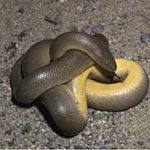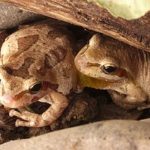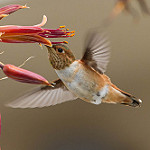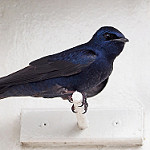Hardwood Rangeland Habitats: Although there are numerous ways to classify California’s oak-dominated woodlands, the five vegetation types used in the California Wildlife Habitat Relationships System (CWHR) are the most commonly used and are described below. The CWHR types are based on the dominant tree species, and we include information on Valley Oak Woodland, Blue Oak Woodland, Blue Oak-Foothill Pine Woodland, Coastal Oak Woodland, and Montane Hardwood Forest here for your reference.
Blue Oak Woodland Vegetation Composition and Structure
Blue oak woodlands are highly variable with blue oak comprising 80-100 percent of the trees present. Foothill pine, California buckeye, valley oak, interior live oak, coast live oak, canyon live oak, and California black oak are common associates of blue oak. The overstory of blue oak woodlands range from sparsely scattered trees on poor sites to nearly closed canopies on good quality sites. Annual grasses form most of the understory in open woodlands. Characteristic shrub species in this community include poison-oak, California coffeeberry, and several species of ceanothus and manzanita.
Ecological Processes
Blue oaks are relatively slow-growing, long-lived trees. Most blue oak stands exist as groups of medium to large trees with few or no young oaks. This may or may not indicate there is a regeneration problem (see chapter 9). However, there is concern that in areas of poor regeneration, blue oak woodlands may be slowly changing into savannas and grasslands as trees die and are not replaced. Since young, vigorous blue oaks can stump sprout readily, while older, decadent trees cannot, younger stands are more likely to regrow after fires. Poor blue oak recruitment from acorns occurs for several reasons. Introduced annual grasses out-compete blue oak seedlings for soil moisture. In addition, acorns and seedlings are eaten or damaged by insects, domestic livestock, and wildlife. Blue oak is also somewhat intolerant of shady conditions, and is unable to survive under dense overstory canopies. Disturbances with small openings may be needed for seedlings to survive and grow sufficiently to promote a broader age class distribution. Furthermore, reduction in annual grass biomass through fire, limited grazing, or weeding may increase seedling growth and survival.
Locational Characteristics
Blue oak woodlands form a nearly continuous band along the Sierra Nevada-Cascade foothills of the Sacramento-San Joaquin Valley. They also occur along the western foothills of the Tehachapi Mountains and eastern foothills of the Coast Range. Typically, blue oak woodlands are found below 3,000 to 4,000 feet, but this elevational threshold drops to around 2,000 feet in the northern range, and rises to around 5,000 feet in the southern range. At lower elevations on gentle slopes, blue oak woodlands typically occur as large blocks with highly variable canopy cover. On steeper ground, blue oak woodlands occur in small patches interspersed with other habitats such as annual grasslands, chaparral, riparian forests, and other types of oak woodlands.
Physical Characteristics
Blue oak woodlands occur on a wide range of soils which are often shallow, rocky, infertile, but well-drained. Blue oak woodlands occur in dry, hilly terrain where the water table is usually unavailable to trees. Over the range of blue oaks, there is considerable climatic variation, with rainfall ranging from 10 to 60 inches annually.
Vertebrate Wildlife Species Associations of Blue Oak Woodlands
These PDFs provide a list of the species of amphibians, birds, mammals, and reptiles that are predicted to use blue oak woodlands habitats. The lists are derived from Version 5.0 of the California Wildlife Habitat Relationships System (CWHR) and includes those species that are predicted to use one or more hardwood rangeland canopy cover classes for breeding, feeding, and/or cover. Most waterbirds like ducks, geese, gulls, and shorebirds were not included in the CWHR predictions because they are mostly associated with lakes, ponds, and rivers. The CWHR System is managed by the California Department of Fish and Wildlife.
The tables also indicate which of these hardwood rangeland species are predicted to use several important habitat elements of the California hardwood rangeland habitats. The elements listed include: acorns; riparian habitat; logs, slash, and brush piles; snags; burrows, rocks, talus, caves and cliffs; and vernal pools and wetland.
Also included are those species which have special status designation by the California Department of Fish and Wildlife and/or the U.S. Fish and Wildlife Service. Most of these species, particularly mammals and reptiles, have locally restricted subspecies that have a special status designation. If you have a species with a special status, you need to get more detailed local information on whether your population is in a subspecies with this special designation. You need to ensure that there is adequate protection for these species, and to make sure that you are not in violation of state or federal endangered species regulations.
Landowners and managers using these lists can get a general idea of which species might be located on a particular property, and which important habitat elements are important to their use of an area. These lists should not substitute for local-based surveys. Landowners may wish to consult with local CDFW biologists, or consulting wildlife biologists for more detailed local surveys of their lands.





